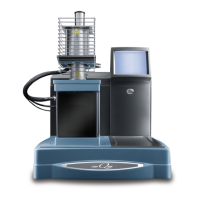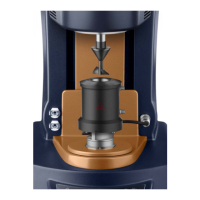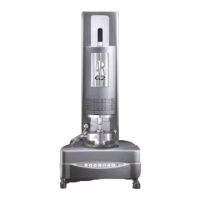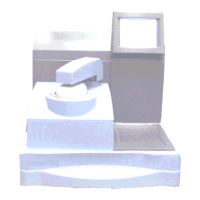Appendix B
B–38 TA I
NSTRUMENTS
TGA 2950
Table B.1
Res %/min Res %/min Res %min Res %/mi
-0.1 28.2 -2.1 2.82 -4.1 0.282 -6.1 0.0282
-0.2 25.1 -2.2 2.51 -4.2 0.251 -6.2 0.0251
-0.3 22.4 -2.3 2.24 -4.3 0.224 -6.3 0.0224
-0.4 20.0 -2.4 2.00 -4.4 0.200 -6.4 0.0200
-0.5 17.8 -2.5 1.78 -4.5 0.178 -6.5 0.0178
-0.6 15.8 -2.6 1.58 -4.6 0.158 -6.6 0.0158
-0.7 14.1 -2.7 1.41 -4.7 0.141 -6.7 0.0141
-0.8 12.6 -2.8 1.26 -4.8 0.126 -6.8 0.0126
-0.9 11.2 -2.9 1.12 -4.9 0.112 -6.9 0.0112
-1.0 10.0 -3.0 1.00 -5.0 0.100 -7.0 0.0100
-1.1 8.91 -3.1 0.891 -5.1 0.089 -7.1 0.0089
-1.2 7.94 -3.2 0.794 -5.2 0.079 -7.2 0.0079
-1.3 7.08 -3.3 0.708 -5.3 0.071 -7.3 0.0071
-1.4 6.31 -3.4 0.631 -5.4 0.063 -7.4 0.0063
-1.5 5.62 -3.5 0.562 -5.5 0.056 -7.5 0.0056
-1.6 5.01 -3.6 0.501 -5.6 0.050 -7.6 0.0050
-1.7 4.47 -3.7 0.447 -5.7 0.045 -7.7 0.0045
-1.8 3.98 -3.8 0.398 -5.8 0.040 -7.8 0.0040
-1.9 3.55 -3.9 0.355 -5.9 0.036 -7.9 0.0036
-2.0 3.16 -4.0 0.316 -6.0 0.032 -8.0 0.0032
The process of initially picking, and then
adjusting resolution setting, is not exacting or
calculated. It is based largely on experience and
some general guidelines. This is because no
single resolution setting will give dramatically
different results from all the others. The change
from one number to another is rather gradual.
Another reason you might wish to experiment
with more than one setting is that some materials
react differently from others to increasing or
decreasing the resolution setting. This is due to
the time as well as the temperature-dependant
nature of transitions, and to the interaction

